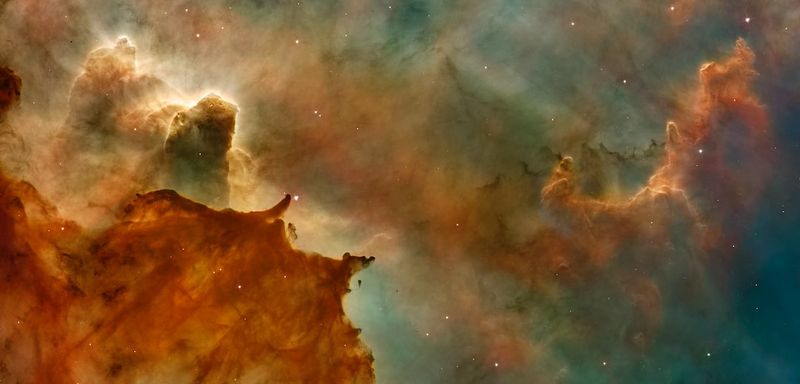Full moons, supermoons, blue moons, and a meteor shower: A celestial spectacle in August
Introduction
The month of August is set to offer a remarkable spectacle in the night sky, with a series of astronomical events taking place. Notably, there will be two full moons, both of which are supermoons. Additionally, a meteor shower, known as the Perseids, will be visible throughout the month. Furthermore, the planet Saturn, accompanied by its iconic rings and numerous moons, will be highly visible. These celestial occurrences provide an exciting opportunity for stargazers and astronomy enthusiasts to explore and ponder the wonders of the universe.
The Supermoons
August offers a unique astronomical phenomenon known as a supermoon. A supermoon occurs when the full moon aligns with the point of its elliptical orbit closest to Earth. This alignment causes the moon to appear larger and brighter than usual, providing a captivating sight for observers. While full moons occur every lunar month, supermoons are relatively rare, with only three or four occurring in a year. This year, however, is even more extraordinary, as there will be four consecutive supermoons. The first supermoon in August, known as the “Sturgeon Moon,” will occur on August 1st, with the second one, a “Blue Moon,” taking place on August 30th.
The Sturgeon Moon
The Sturgeon Moon, as it is traditionally called, derived its name from the Great Lakes and Lake Champlain, where August is the season for catching giant sturgeons. In addition to its traditional name, the Sturgeon Moon is also referred to by various other names that reflect different cultural and ecological aspects. For instance, the Cree people of Canada use the term “Flying Up Moon” to symbolize the moment when young birds are ready to take flight. Other indigenous cultures, such as the Algonquin, Dakota, and Anishinaabe, associate the Sturgeon Moon with the harvesting and gathering of crops.
The Blue Moon
Contrary to its name, the term “Blue Moon” has nothing to do with the moon’s color. Rather, a Blue Moon refers to an extra full moon that occurs within a calendar month. The lunar cycle lasts approximately 29.5 days, so every few years, there is an opportunity to witness this phenomenon. It is worth noting that a Blue Moon can occur in any month except February, which has fewer days in a common year. There is also a seasonal Blue Moon, which refers to the third full moon in a season that typically consists of four full moons.
The Meteor Shower: Perseids
Another striking astronomical event in August is the Perseids meteor shower. This annual event marks the Earth’s passage through the debris left by Comet Swift-Tuttle. As the comet orbits the sun, it sheds tiny dust and particles, which enter Earth’s atmosphere and burn up in a spectacular display of light. The Perseids are particularly popular as they peak during warm summer nights in the northern hemisphere, making them easier to observe.
The Perseids and Stargazing Timing
The Perseids will be active from July 14th to September 1st, but the peak activity is expected on the nights of August 12th and 13th. During these nights, one can witness a higher concentration of meteors, with rates ranging from 50-75 meteors per hour in rural areas. To enhance the viewing experience, it is recommended to find a location away from city lights, allowing for a darker sky that accentuates the brilliance of the meteors.
Editorial: The Beauty and Significance of Celestial Events
Astronomical events such as full moons, supermoons, and meteor showers evoke a sense of wonder and contemplation, reminding us of our place in the cosmos. These celestial occurrences offer a moment of respite from our daily lives, inviting us to gaze upward and ponder the mysteries that surround us.
Throughout history, various cultures have assigned meanings and names to different full moons, reflecting the symbiotic relationship between humanity and the natural world. These names not only enable us to track the passage of time and seasonal changes but also serve as a reminder of our interconnectedness with the Earth and the cosmos. The Sturgeon Moon, for example, connects us to the cycles of harvest and the abundance of nature, while the Blue Moon reminds us of the beauty of celestial rhythms that transcend our earthly circumstances.
The Perseids meteor shower, with its awe-inspiring display of shooting stars, invites us to contemplate the vastness of space and our place within it. As we marvel at the interconnectedness of celestial bodies and the infiniteness of the universe, we are reminded of the fragility and preciousness of life on Earth. Observing the Perseids can serve as a profound reminder of the wonders of the universe and the need to preserve and protect our planet.
Advice: Enjoying the Celestial Spectacle
To fully experience and appreciate the celestial events in August, here are a few suggestions:
1. Mark your calendar with the dates of the full moons and the peak nights of the Perseids meteor shower.
2. Find a location away from light pollution, such as a park or open field, to ensure a clear view of the night sky.
3. Consider bringing a telescope or binoculars to enhance your viewing experience, particularly for observing Saturn and its ring system.
4. Dress warmly and comfortably, as stargazing often means spending extended periods under the night sky.
5. Bring a blanket or a reclining chair to make yourself comfortable while watching the meteor shower.
6. Stay patient and allow your eyes some time to adjust to the darkness, as this will enhance your ability to see the fainter stars and meteors.
Remember, observing celestial events offers more than just visual delight; it opens a gateway to contemplation and reflection. So take a moment to step away from the hustle and bustle of daily life, look up, and let the wonders of the sky evoke a renewed sense of awe and inspiration.

<< photo by Killian Eon >>
The image is for illustrative purposes only and does not depict the actual situation.




